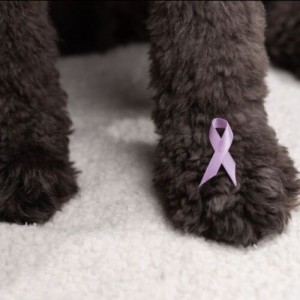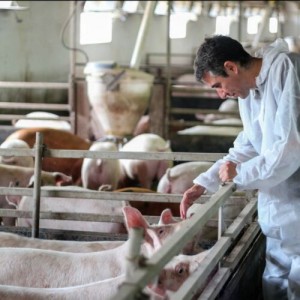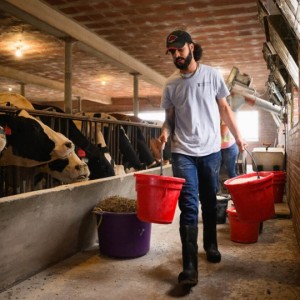The dogs of Chernobyl: Insights into populations inhabiting the nuclear exclusion zone
In this study, a team of international researchers characterized the genetic composition of free-breeding dogs living within and around the site of the 1986 Chernobyl nuclear disaster. Previous studies have shown that the two largest nuclear disasters in history, occurring at the Chernobyl Nuclear Power Plant (CNPP) in 1986 and the Fukushima Daiichi Nuclear Power Plant in 2011, led to massive ecological consequences for wildlife and domestic animals.
However, far more radioactivity was released at Chernobyl than at Fukushima, including approximately six times more cesium-137, a long-lived radionuclide with a half-life of over 30 years.
The authors present the first genetic analysis of domestic dogs affected by a nuclear disaster, establishing that populations of semi-feral dogs have likely populated the Chernobyl nuclear disaster site in the decades since the accident. Some dogs are living in, and breeding around, highly contaminated areas such as the Chernobyl New Safe Confinement structure, built to contain radioactivity from the damaged reactor, and storage areas for spent nuclear fuel (ISF2). These dogs of Chernobyl are of immense scientific relevance for understanding the impact of harsh environmental conditions on wildlife and humans alike, particularly the genetic health effects of exposure to long-term, low dose ionizing radiation and other contaminants. Their adaptation to harsh living conditions makes them an ideal system in which to identify mutational signatures resulting from historical and ongoing radiation exposures.
Before the effects of radiation on the whole genomes of this population can be isolated from other influencing factors, the demography and history of the population itself need to be understood in order that a rigorous framework for experimental design can be constructed. Despite the evidence of clear genetic differentiation between dog populations in Chernobyl City, the CNPP and Slavutych relative to dog populations elsewhere, the researchers’ genome-wide SNP analysis of kinship and F3 statistical analysis identifies signatures of admixture between these three major populations. The team observed extensive relatedness and discrete family structures in which first-degree relationships are evident, particularly within the CNPP.
Consistent with previous studies, the team’s findings highlight the tendency of semi-feral dogs, much like their wild canid ancestors, to form packs of related individuals. However, the research team's findings also reveal that within this region, small family groups or packs of free-roaming dogs coexist near each other, a phenomenon at odds with the generally territorial nature of the domestic dog’s closest ancestor, the gray wolf.
Free-roaming dogs in urban areas tend to adapt their territoriality and day-to-day movement in response to humans in the region. Generally, their home range consists of a small core, where they sleep, and a buffer zone, where they search for food. The combination of observed behaviors in the Chernobyl dogs and their complex family structures suggests that the Chernobyl dog populations violate the assumption of random mating that is inherent to many populations' genetic models.
The idea that the dogs now living in the greater Chernobyl area are descendants of the pets left behind by evacuees after the nuclear disaster remains uncertain. Researchers' findings indicate that the CEZ populations share ancestry with shepherd-related breeds, perhaps suggesting that they descend from the same, likely small, founding population of dogs that remained after the disaster and subsequent culling.
Evidence of genetic isolation within the CNPP population suggests that this group is most likely to represent the original dog population that inhabited the region before or immediately following the nuclear disaster.
The relative isolation and discrete genetic makeup of the CNPP population are key factors in the characterization of this population and the design of all future mapping studies. There have been fewer genetic contributions from modern dogs into the CNPP population, suggesting that they have lived and reproduced in this environment for a longer period of time than dogs from Chernobyl City or Slavutych. Uniquely, each individual population in the Chernobyl region has experienced differential levels of contamination that are well recorded, offering additional advantages in experimental design.
The Chernobyl dog population has great potential for informing environmental resource management studies in a resurging population. Its greatest potential, however, lies in understanding the biological underpinnings of animal and, ultimately, human survival in regions of high and continuous environmental assault.
Reporter Katherine J. Wu recently covered this research in The Atlantic.
Gabriella Spatola et al. "The dogs of Chernobyl: Demographic insights into populations inhabiting the nuclear exclusion zone." Science Advances. 3 March 2023. Vol. 9, Issue 9. DOI: 10.1126/sciadv.ade2537














List
Add
Please enter a comment